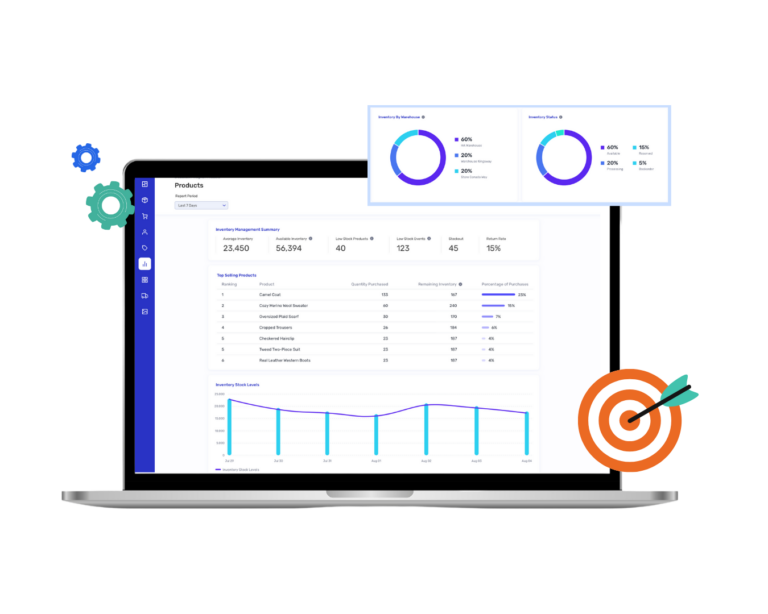How was Breadstack created? What was the problem it was designed to solve?
Our story began as a team of affiliate marketers and early adopters of ecommerce. As the businesses began to grow, we recognized one of our keys to success was truly understanding our customers and providing personalized experiences.
We implemented a thorough process to personalize each customer’s shopping experience – making it customer-focused. We were reviewing all customer profiles, purchase history, and buying habits then used this data to offer personalized recommendations.

We found this created a positive shopping experience that always kept customers coming back. However, as the business continued to grow our personalization efforts took more time and more effort.
The complexity of managing multiple ecommerce websites also became a bigger challenge. We knew we needed something that achieved both of these obstacles we were having. In the end, we decided to create our own internal software.
It was simple, we wanted to develop software that would allow us to seamlessly manage multiple online stores, with the customer at the forefront.
Fast forward to now, Breadstack has become a suite of tools that help in many areas of an ecommerce business. Our goal is to solve the problems for ecommerce owners, just like we had.
OUR MISSION
"We want to give businesses their time, energy, and money back in their day-to-day operations, so they can focus on improving their customer experiences and building loyalty in today’s competitive landscape."
What do you see as the primary challenges retailers are dealing with right now?

Adopting E-Commerce and Technology
Most established retailers often think, “if it’s not broken, don’t fix it.” They believe their customers prefer shopping in physical stores, so there’s no need to invest in online shopping.
Moving from traditional in-person operations to digital ecommerce platforms can be challenging because it requires major changes in thinking and processes.
Without the time, budget, and resources, retailers have difficulty changing their business models, updating infrastructure, and improving employee skillset to embrace digital transformation effectively.

Customer Experience and Loyalty
Customer experience plays a vital role in retailers’ success. Positive experiences boost customer loyalty and brand reputation, while negative ones risk customer loss and harm reputation.
Satisfied customers often recommend the brand to others, leading to new customers and increased sales. If the shopping process is smooth and personalized, customers are likely to buy more often.
Staying up-to-date with what customers want is key to staying competitive. By actively listening to customer feedback, retailers gain valuable insights for improvement and decision-making.

Siloed Data
Siloed data has detrimental effects on retailers. The lack of comprehensive insights can have an impact on efficiency and accuracy in operations.
Retailers face challenges in delivering consistent and personalized customer experiences when they don’t have access to unified customer data.
Isolated data also impacts important decision making, such as effectiveness, innovation, and compliance efforts.

Last mile Delivery
Many retailers may struggle with store-to-door deliveries, inefficient routing, and increased costs. Additionally, they may face operational inefficiencies and a competitive disadvantage compared to rivals excelling in last-mile delivery.
Embracing last-mile delivery is crucial for enhancing the customer experience, increasing sales, and gaining a competitive edge in the market.

Inventory Management
Ineffective inventory management can lead to increased holding costs, stockouts, and lost sales, resulting in inefficient cash flow and reduced profitability.
Carrying costs may increase, and at times deteriorate inventory which can cause financial losses for the business. Poor demand prediction can result in heavy discounts, hurting profits and slowing business growth.
For helpful information about inventory management, read our article “Tips for Inventory Management”.
Could you provide a simple overview of the technology that Breadstack employs?
Cantec
Cantec is Breadstack’s solution for delivery management. The brand strategy for Cantec is focused on efficiency, reliability, and automation.
Cantec’s logo and marketing materials feature a stylized arrow to convey speed and efficiency, while its messaging emphasizes the product’s ability to automate and streamline delivery operations for businesses of all sizes.
Chatso
Chatso is Breadstack’s solution for live chat and customer support. The branding strategy for Chatso is focused on capturing customer insights to help businesses improve their customer experience.
The brand emphasizes the use of technology and data to provide actionable insights and drive business growth. The logo and marketing materials feature a chat bubble with three dots, which represents intelligence and wisdom, reinforcing the brand’s focus on data-driven decision making.
Commerce Hub
Commerce Hub is Breadstack’s flagship solution that is designed to help businesses manage and grow their online stores. It has features that streamline their operations, improve their online presence, and increase sales and revenue.
Breadstack’s logo and marketing materials convey a sense of energy and innovation, while its messaging emphasizes the product’s ability to empower entrepreneurs and businesses to compete against industry giants.
Where do you think ecommerce and retail are going?
As customer expectations evolve, technology must keep pace with consumer demands. In my view, the future of ecommerce will revolve around instantaneous shopping experiences and seamless returns.
This implies that businesses must find ways to lower operating costs using AI technology, enabling customers to make purchases and returns effortlessly, whenever they desire.
To learn more about the future, read our article: “Ecommerce trends in 2023”
What’s your five-year vision for Breadstack?
Bring awareness to traditional brick-and-mortar businesses and empower them with user-friendly and quick to deploy ecommerce technology.
We want to enable any size businesses to stay relevant in the competitive digital landscape, and compete with industry giants.
-Mike Le
CEO/Founder




